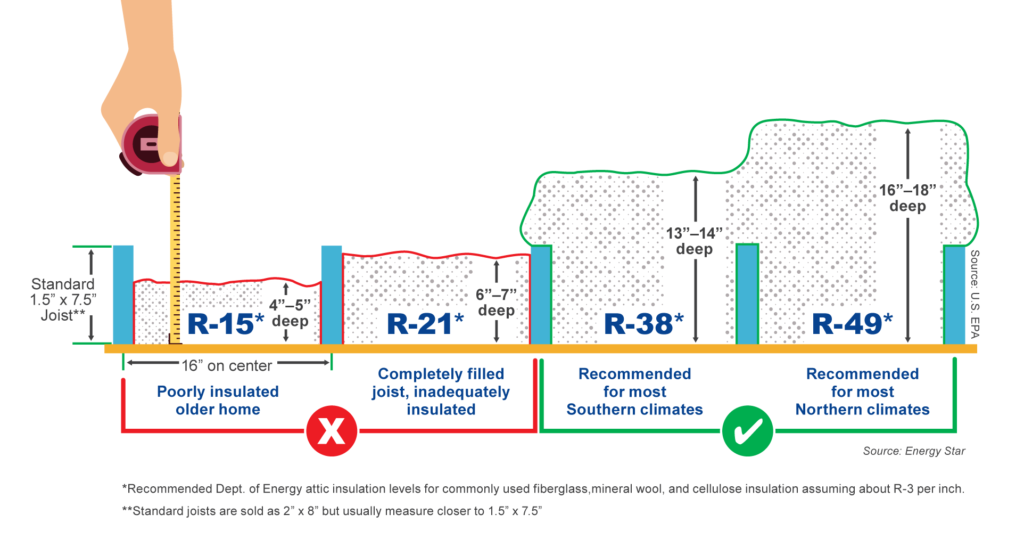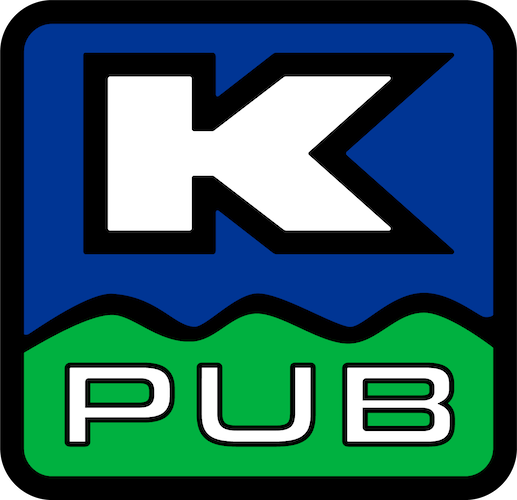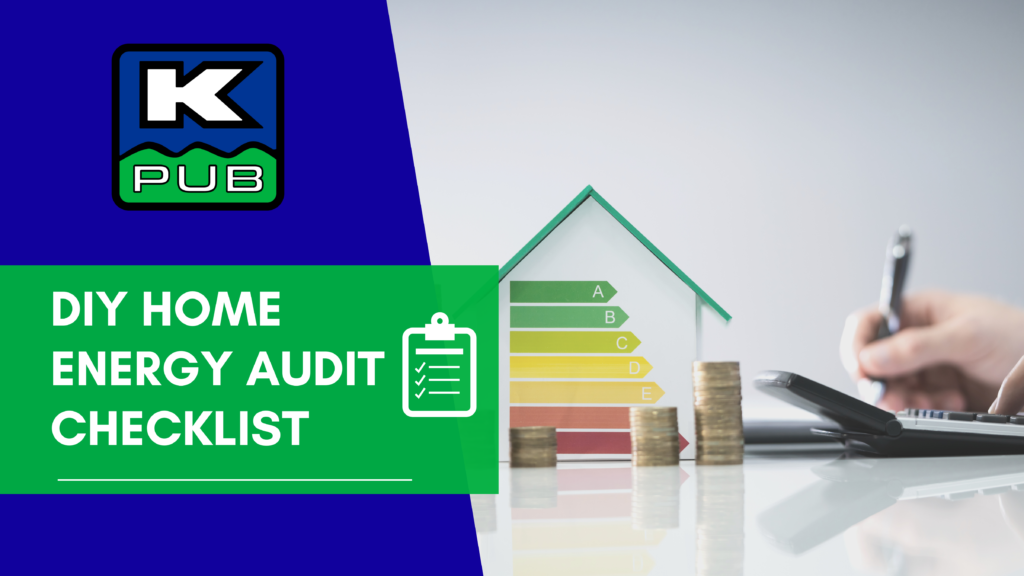There are a lot of factors at play when it comes to the amount of your monthly utility bill. If your electric bills have caught you by surprise and you are wondering how/why, you might consider a home energy audit.
Whether your home is old or new, it’s likely that you are spending more on energy than necessary. A home energy audit can help you identify where your home is losing energy and where you can save money.
Home energy assessments can be conducted by a professional, or by you, the homeowner. Normally, our KPUB energy-efficient specialist visits your home to provide a home analysis with energy-saving tips. However, in the midst of COVID-19 health and safety concerns, we have temporarily suspended our KPUB in-person energy audits.
A DIY home energy audit may not be as thorough as an assessment done by a professional, but it can help you pinpoint the ways you can make your home more energy-efficient.
If you are ready to roll up your sleeves and save some money, use the checklist below to help guide your efforts. Also, don’t forget that KPUB offers rebates for energy-efficiency home improvements, including many of the ones listed below (attic insulation, central AC, etc.). Learn more online here.
KPUB’s DIY Home Energy Checklist
Check the Insulation in the Attic
Insulation is essential for sealing in the warmth during winter and blocking out hot air in the summer. Older houses may be using very old or low-quality insulation, or they may have had their insulation improperly installed. As a general rule, the longer a house has been standing, the more likely it is that your insulation has been compromised and needs to be replaced.
The insulation’s effectiveness is measured in R-value (the depth of your insulation). Various materials have different values per inch. The higher the R-value, the better the insulation. R-38 is a recommended one for our region (approximately 13-14” in your attic area).

We recommend that you visit Energy Star’s website for additional information.
Did you know? According to Energy Star, 9 out of 10 homes in the U.S. are under-insulated.
View your Home with an Infrared or Thermal Camera (& There is an App for That!)
This step works best when the temperature outside is significantly different than the temperature indoors.
• First, download an app for an infrared or thermal camera.
• Aim the camera at the seals around doors and windows.
• Red shows heat, and blue shows cooler temperatures.
• See where the air leaks are.
When the camera is aimed at the walls and ceiling, red or blue areas show where there are gaps in the insulation of the house. Focus your effort on areas that are red in the summer and blue in the winter.
Check for Air Leaks
A home that is well-sealed is an energy-efficient one. We recommend the following:
• Search for air leaks through gaps around tiny crevices—around plumbing pipes, and through wall cracks.
• Check the weather stripping along all door seals and windows.
• Check your ductwork for air leaks or gaps. If such is the case, patch them with aluminum tape.
• After you have identified any air leaks or gaps, apply caulking and weather stripping in any areas where there are drafts around your home’s windows and doors.
• If you have a fireplace, ensure the damper is closed when it’s not in use.
Did you know? According to Energy.Gov, the potential energy savings from reducing drafts in a home may range 10-20% per year.
Check your HVAC System
Air conditioners, furnaces, and heat pumps should be professionally tuned up and checked on a yearly basis.
There are a few things you can do to ensure that your HVAC system is working well:
• Make sure that the condensers of your air conditioner are free of debris.
• Check for loose electrical connections.
• Smell for gas leaks or any unusual smell.
• Keep your filters clean (and we recommend changing them monthly).
• Check for unusual noises or squeaks. Your system should only make minimal noise.
• Reduce cooling and heating load by turning back the thermostat. If possible, you can use other means to keep comfortable, such as wearing weather-appropriate clothing or using ceiling fans.
Did you know? According to Energy Star, over half (~53%) of your energy usage is typically from heating & cooling.
Insulate your Water Pipes & Tanks
• Install an insulation blanket around the water heater tank or consider a tankless water heater and wrap insulation around hot water pipes.
• Lower thermostat settings to 120° F.
Did you know? According to Energy.gov, approximately 15% of your energy usage can typically be from water heating
Be Smart with your Window Treatments & Lightbulbs
With the correct window treatments and light bulbs, your home will be well-lit for a few dollars per year.
•Turn off the lights when a room is not in use.
• Upgrade to LED light bulbs throughout your home.
• Get free, natural light whenever you can, but during summer, try not to open the shades at the expense of unnecessary heat.
Check your Major Appliances & Electronics
• Replace old appliances with Energy Star-certified over time, and save money with their reduced energy use.
• Cleaning the coil under the refrigerator will help it run cooler and more efficiently. Disconnect the power first!
• The energy use of electronics such as game consoles, TVs, and computers can really add up, too. Unplug any electronics when they are not in use.
Still need more energy saving tips? Learn more on KPUB’s website here.
For additional information on how to conduct a DIY Home Energy Audit, visit https://www.energy.gov/energysaver/home-energy-audits.

